Sanna Kannisto - Wanderer, Observer and Conveyer - Ausstellung Berlin
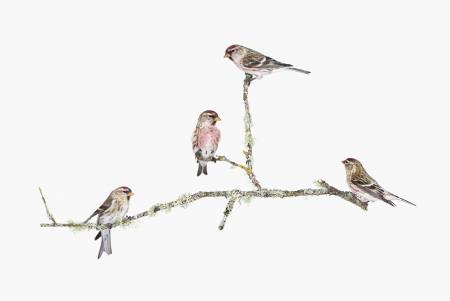
Ausstellung Galerie Gallery Taik Persons
Datum: 15.09.2018 - 17.11.2018
Künstler: Sanna Kannisto
Veranstalter & Ort:
Galerie Gallery Taik Persons
10969 Berlin
Lindenstr. 34
Gallery Taik Persons is delighted to present Sanna Kannisto‘s second solo exhibition Wanderer, Observer and Conveyor as part of the European Month of Photography Berlin.
Sanna Kannisto works on the verge of experiences in nature. Sometimes that means windy weather on a rugged peninsula in Hanko, Finland, and at other times spending weeks in the rain forest on the other side of the Pacific. The force that urges her on is found in nature: birds, plants and landscapes. Sanna Kannisto has photographed animal, plant and landscape subjects over a couple of decades. She has developed her own methods of creating images, which are often titled taxonomically. Her works convey a sense of concentration and peace, which is a basic requirement for working with nature. Kannisto is interested in humankind’s desire to control nature and to study and gather information. She also sees herself as a kind of collector, who adds one species after another to her own collection. “In the past, scientists and artists were sometimes the same person. I’m interested in working from both roles,” says Kannisto. As an artist, she has the freedom to embrace many species and many kinds of subjects. “The subject doesn’t even have to be particularly fine or colourful. The everyday and the ordinary are interesting. What’s essential is how you manage to take the picture,” Kannisto says.
White background
Kannisto’s works often resemble still lifes. Nature is presented against a white background. The subject may be a branch, a frog, a butterfly, a hummingbird in flight or a nectar bat feeding. Flying before us are also birds that frequent Finnish latitudes such as a blue tit (Cyanistes caeruleus), a European robin (Erithacu rubecula), a red-backed shrike (Lanius collurio) and a goldcrest (Regulus regulus). Detaching a plant or animal from its environment shows it in a new light: even a grey bird is revealed as quite a star when the image size increases and the subject is bathed in light in a field studio. [...] Kannisto explains that in a photography situation she has to operate quickly as the birds must be released rapidly. Some birds perch on a branch immediately while others are more cautious. Often a connection and momentary trust are created though, as birds are curious and intelligent. Although the images are constructed and planned, the situations can change in a moment. They often involve happenstance and surprises, as the animals behave according to their own thoughts. For instance the waxwings, siskins and bullfinches began to eat in the studio. “Being with a bird is utterly unique. It is moving. The gaze of a bird is mysterious. I look at the bird and it looks at me. For a moment we have some kind of shared thought. It’s a kind of mutual examination,” Kannisto says.
A desire to handle and show
Ever since she was a child, Kannisto has had a desire to examine nature at close hand. For her, holidays and weekends spent at a cottage in rural Kanta-Häme meant adventures in the wild. Kannisto collected insects and frogs. “I’ve always had a desire to take things into my hands and study them up close, to look at the details,” she says. Her own desire for close examination has grown into a need to show others.
Subjects that fascinate and affect the artist are turned into works of art. Photography is thinking, sharing a view of the world. Sometimes it is also concrete co-existence with one’s subject. For instance, when Kannisto was photographing butterflies, she bred them as well. The curtains of her studio were covered with elephant hawk-moth eggs, and she even took larvae along with her on summer holiday trips. There is a strong history of depicting nature in many artists’ output. Looking at Kannisto’s work takes one’s thoughts in many directions at once. On one hand, there is English artist Marianne North (1830–90), who travelled around the world from Brazil to Australia and New Zealand and painted plants in their natural environments. [...] At the other extreme there is Karl Blossfeldt (1865–1932), systematic collector of plants who photographed thousands of plants and their details against grey or black backgrounds. [...] Both of these had distinct and unique expressive languages of their own. While working from quite different starting points, they created settings for nature to shine. Kannisto, too, directs lights, picks out and shows us flora and fauna from different perspectives. Our era is however completely different from that of North or Blossfeldt. In their day, the wildernesses were still unexplored. Now there are hardly any such areas remaining. Kannisto talks about how nowadays humans decide where nature may exist and where it is removed. “It should be possible to protect nature from us,” Kannisto says.
Landscapes
Sanna Kannisto is a wanderer, an observer and a conveyor. On one hand, she shows nature through its details, and on the other hand through its entirety. The scale ranges from a bird’s eye to an entire forest. A landscape may just as well be found in South America as in Hanko. What is essential is presence. Kannisto speaks of routines related to embracing a landscape, of walking, seeking ideas and tiring oneself out physically. Experiencing a landscape involves time—the change of seasons, the constant transformation and cycles of nature. For Kannisto, seasons mean surrender, melancholy and waiting, but also excited amazement. It is all interesting. “I’d like to spend more time in the forest. For instance in winter the Helsinki districts of Myllypuro and Viikki have a fine greyness, asceticism and austerity. When everything else is expressionless, the fog, the drops of water and the snow on the ground are emphasised. When the sun appears amid the greyness, it’s a wonderful moment,” Kannisto says. [...]
Sanna Kannisto was born in Hämeenlinna, Finland, in 1974. She lives and works in Helsinki. Kannisto graduated from the Aalto University School of Arts, Design and Architecture in 2002. Her works have been exhibited in international institutions such as The Museum of Photography Seoul (Seoul, 2018), Whatcom Museum (Bellingham, WA, 2017), Ateneum Art Museum (Helsinki, 2017), Palais de Tokyo (Paris, 2013), Kiasma Museum of Contemporary Art (Helsinki, 2013), and Centre Pompidou (Paris, 2010). Gallery Taik Persons will present her most recent works in a solo exhibition as part of The European Month of Photography Berlin in September 2018.
Sanna Kannisto works on the verge of experiences in nature. Sometimes that means windy weather on a rugged peninsula in Hanko, Finland, and at other times spending weeks in the rain forest on the other side of the Pacific. The force that urges her on is found in nature: birds, plants and landscapes. Sanna Kannisto has photographed animal, plant and landscape subjects over a couple of decades. She has developed her own methods of creating images, which are often titled taxonomically. Her works convey a sense of concentration and peace, which is a basic requirement for working with nature. Kannisto is interested in humankind’s desire to control nature and to study and gather information. She also sees herself as a kind of collector, who adds one species after another to her own collection. “In the past, scientists and artists were sometimes the same person. I’m interested in working from both roles,” says Kannisto. As an artist, she has the freedom to embrace many species and many kinds of subjects. “The subject doesn’t even have to be particularly fine or colourful. The everyday and the ordinary are interesting. What’s essential is how you manage to take the picture,” Kannisto says.
White background
Kannisto’s works often resemble still lifes. Nature is presented against a white background. The subject may be a branch, a frog, a butterfly, a hummingbird in flight or a nectar bat feeding. Flying before us are also birds that frequent Finnish latitudes such as a blue tit (Cyanistes caeruleus), a European robin (Erithacu rubecula), a red-backed shrike (Lanius collurio) and a goldcrest (Regulus regulus). Detaching a plant or animal from its environment shows it in a new light: even a grey bird is revealed as quite a star when the image size increases and the subject is bathed in light in a field studio. [...] Kannisto explains that in a photography situation she has to operate quickly as the birds must be released rapidly. Some birds perch on a branch immediately while others are more cautious. Often a connection and momentary trust are created though, as birds are curious and intelligent. Although the images are constructed and planned, the situations can change in a moment. They often involve happenstance and surprises, as the animals behave according to their own thoughts. For instance the waxwings, siskins and bullfinches began to eat in the studio. “Being with a bird is utterly unique. It is moving. The gaze of a bird is mysterious. I look at the bird and it looks at me. For a moment we have some kind of shared thought. It’s a kind of mutual examination,” Kannisto says.
A desire to handle and show
Ever since she was a child, Kannisto has had a desire to examine nature at close hand. For her, holidays and weekends spent at a cottage in rural Kanta-Häme meant adventures in the wild. Kannisto collected insects and frogs. “I’ve always had a desire to take things into my hands and study them up close, to look at the details,” she says. Her own desire for close examination has grown into a need to show others.
Subjects that fascinate and affect the artist are turned into works of art. Photography is thinking, sharing a view of the world. Sometimes it is also concrete co-existence with one’s subject. For instance, when Kannisto was photographing butterflies, she bred them as well. The curtains of her studio were covered with elephant hawk-moth eggs, and she even took larvae along with her on summer holiday trips. There is a strong history of depicting nature in many artists’ output. Looking at Kannisto’s work takes one’s thoughts in many directions at once. On one hand, there is English artist Marianne North (1830–90), who travelled around the world from Brazil to Australia and New Zealand and painted plants in their natural environments. [...] At the other extreme there is Karl Blossfeldt (1865–1932), systematic collector of plants who photographed thousands of plants and their details against grey or black backgrounds. [...] Both of these had distinct and unique expressive languages of their own. While working from quite different starting points, they created settings for nature to shine. Kannisto, too, directs lights, picks out and shows us flora and fauna from different perspectives. Our era is however completely different from that of North or Blossfeldt. In their day, the wildernesses were still unexplored. Now there are hardly any such areas remaining. Kannisto talks about how nowadays humans decide where nature may exist and where it is removed. “It should be possible to protect nature from us,” Kannisto says.
Landscapes
Sanna Kannisto is a wanderer, an observer and a conveyor. On one hand, she shows nature through its details, and on the other hand through its entirety. The scale ranges from a bird’s eye to an entire forest. A landscape may just as well be found in South America as in Hanko. What is essential is presence. Kannisto speaks of routines related to embracing a landscape, of walking, seeking ideas and tiring oneself out physically. Experiencing a landscape involves time—the change of seasons, the constant transformation and cycles of nature. For Kannisto, seasons mean surrender, melancholy and waiting, but also excited amazement. It is all interesting. “I’d like to spend more time in the forest. For instance in winter the Helsinki districts of Myllypuro and Viikki have a fine greyness, asceticism and austerity. When everything else is expressionless, the fog, the drops of water and the snow on the ground are emphasised. When the sun appears amid the greyness, it’s a wonderful moment,” Kannisto says. [...]
Sanna Kannisto was born in Hämeenlinna, Finland, in 1974. She lives and works in Helsinki. Kannisto graduated from the Aalto University School of Arts, Design and Architecture in 2002. Her works have been exhibited in international institutions such as The Museum of Photography Seoul (Seoul, 2018), Whatcom Museum (Bellingham, WA, 2017), Ateneum Art Museum (Helsinki, 2017), Palais de Tokyo (Paris, 2013), Kiasma Museum of Contemporary Art (Helsinki, 2013), and Centre Pompidou (Paris, 2010). Gallery Taik Persons will present her most recent works in a solo exhibition as part of The European Month of Photography Berlin in September 2018.
Ads
weitere Ausstellungen von Gallery Taik Persons

24.11.2018 - 19.01.2019
Cyclic Repetitions
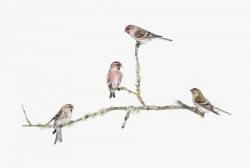
15.09.2018 - 17.11.2018
Sanna Kannisto - Wanderer, Observer and Conveyer

30.06.2018 - 08.09.2018
Reflections: from here to there
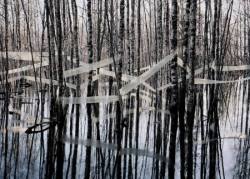
17.02.2018 - 21.04.2018
Riitta Päiväläinen: River Notes
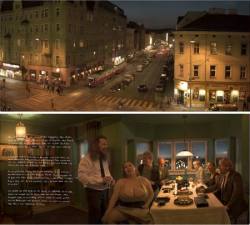
03.11.2017 - 10.02.2018
Jari Silomäki - Framing the World
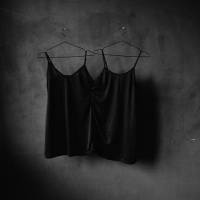
16.09.2017 - 18.11.2017
FALLEN FEATHERS (FROM THE PHOENIX SERIES) HILLA KURKI
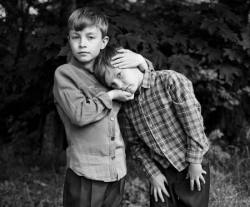
01.07.2017 - 09.09.2017
Shared
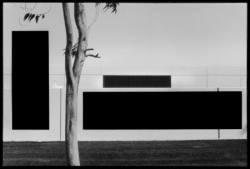
29.04.2017 - 24.06.2017
Grey Crawford - Finding Bones